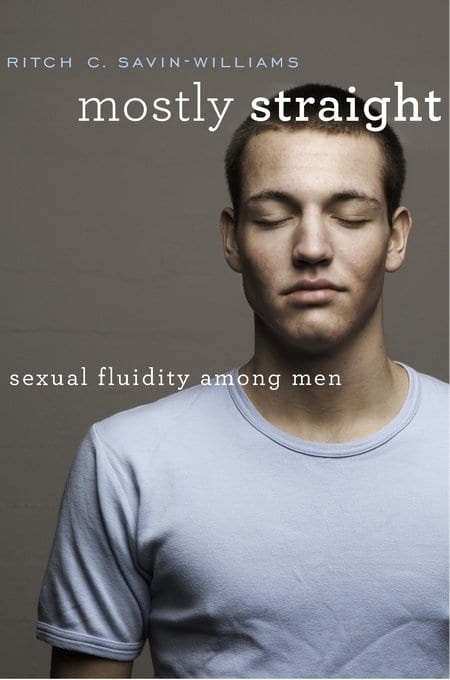
In 2013, actor Josh Hutcherson attracted some media attention when he made a relatively mild declaration that he would “probably list [himself] as mostly straight.” In the same interview with Out, Hutcherson said pointedly, “Maybe I could say right now I’m 100% straight… But who knows?” In other words, he was a young man in his early 20 who was generally confident he was straight but not wholeheartedly closed to discovering new things about himself. Put more simply, Hutcherson was a young person in their early 20s. For Ritch Savin-Williams, Hutcherson was a “pioneer of this movement who shares with his millennial generation the possibility of being open, honest, revolutionary, and mostly straight.” Somewhere along the way one young man’s characteristically free-spirited remark became “a movement”. Because, why not?
None of this is to dismiss the good work Hutcherson has done for the gay community, co-founding and helping to lead Straight But Not Narrow (SBNN), which describes itself as “an ally awareness campaign that prepares and trains young adults on how to become allies of their LGBTQ peers.” Still, SBNN gives a noticeably different characterization of “the movement” than Ritch Savin-Williams seems inclined to assign Hutcherson’s “revolutionary” remark. Of course, male sexual fluidity is discussed far less frequently than female sexual fluidity — a point Savin-Williams’ acknowledges in the “Sexual and romantic fluidity” chapter of the book. But with Mostly Straight the contemporary academic infatuation with self-indulgent wordplay reaches its nadir.
Savin-Williams, professor in Cornell’s Department of Human Development, has doubled down on the idea that “gay” and “straight” are not mere characterizations of human behavior but are effectively categories of being. From within that, Savin-Williams has raised us one new category and the promise of many others. We are led to believe whole new categories of being exist alongside these traditional ones of gay, straight, and bisexual. Rather than men who occasionally experience sexual attraction to men, there are men for whom that is who and what they are (“mostly straight”). It’s an intellectual charade of the boldest kind. Mostly Straight is littered with turns of phrase that perhaps are meant to be cheeky (“drops of gayness”, “sexual neverlands”, “closer cousins to straight men than bi men”) but only end up bleeding away what little meaning might be derived from an authentic look at sexual fluidity.
If, in fact, Savin-Williams’ question is How do we stop forcing young men to be something they’re not? the answer might be to stop making up pseudo-intellectual categories and telling them that’s where they belong. Savin-Williams asks, “We like our sexualities simple, especially among our male youths, and we prefer to ignore undue complexity.” It’s hard to imagine that anyone who has studied sexuality seriously, or even experienced their own, believes it’s a simple thing. Nevertheless, there’s a world of difference between ignoring undue complexity and creating it.
By the end of the book, it remains entirely unclear why this new category is at all necessary. It’s difficult to discern exactly what we’re supposed to take away from Mostly Straight: that male sexual fluidity deserves more attention? That male sexuality isn’t as black-and-white as Hollywood portrays it? Two hundred pages aren’t required to answer each affirmatively. This is mostly a scrapbook of stories/interviews with straight men who may need reminding that straight men can have intimate homosocial relationships without needing their own category of identity — it exists in other countries all over the world without attempting to punt these men into some non-heterosexual check-box.
Straight men have sex with men for a dozen different reasons, none of which need some manufactured academic justification. Bisexual men aren’t any less bisexual for having a slight preference for one sex over the other. Gay men have experimented with, and even enjoyed, sexual encounters with women. The sort of pseudoscientific vocabulary Savin-Williams uses here is exactly what handicaps social scientists’ claims to scientific rigor comparable to the hard sciences. Social scientists do remarkable work and many employ a wide set of rigorous techniques in their research. A quote like, “Simply, a straight but not totally straight young man identifies as straight (not mostly straight) but has a very small, perhaps 1 to 2 percent, degree of same-sex attraction”, with its hand-waving pretension to some meaningful conclusion eats away at the seriousness of the book. “Straight, but not totally straight” men have a “1 to 2 percent, degree of same-sex attraction.” The percentages were seemingly plucked from the air as if to convey that there’s anything reliable in this apparently random categorization.
It seems, according to Mostly Straight, that the solution to helping young men understand and process their sexuality is to create a new well-delineated identity box. Until that one is too small and then we’ll create another one for the slightly straight, then one for the seasonably bisexual, the intermittently gay, the Christmas-and-Easter straight. On the other hand, perhaps we can stop demanding categories of sexual behavior and simply let young men live their lives and find their own identities. Most people will self-sort of their own accord, and for the ones who don’t, what does it help to create these new categories as if we must tie them down to some category for our own satisfaction?
Despite all of its shortcomings, what Mostly Straight does illuminate is the impractical difficulty of our insistent labeling of individuals so early in their lives. Gossip websites and social media remain perpetually interested in debating whether this young teenage celebrity or that might be gay. It’s unfair and ostracizing, and although Savin-Williams’ pendulum might swing too far in the opposite direction, this pernicious habit needs to stop.

